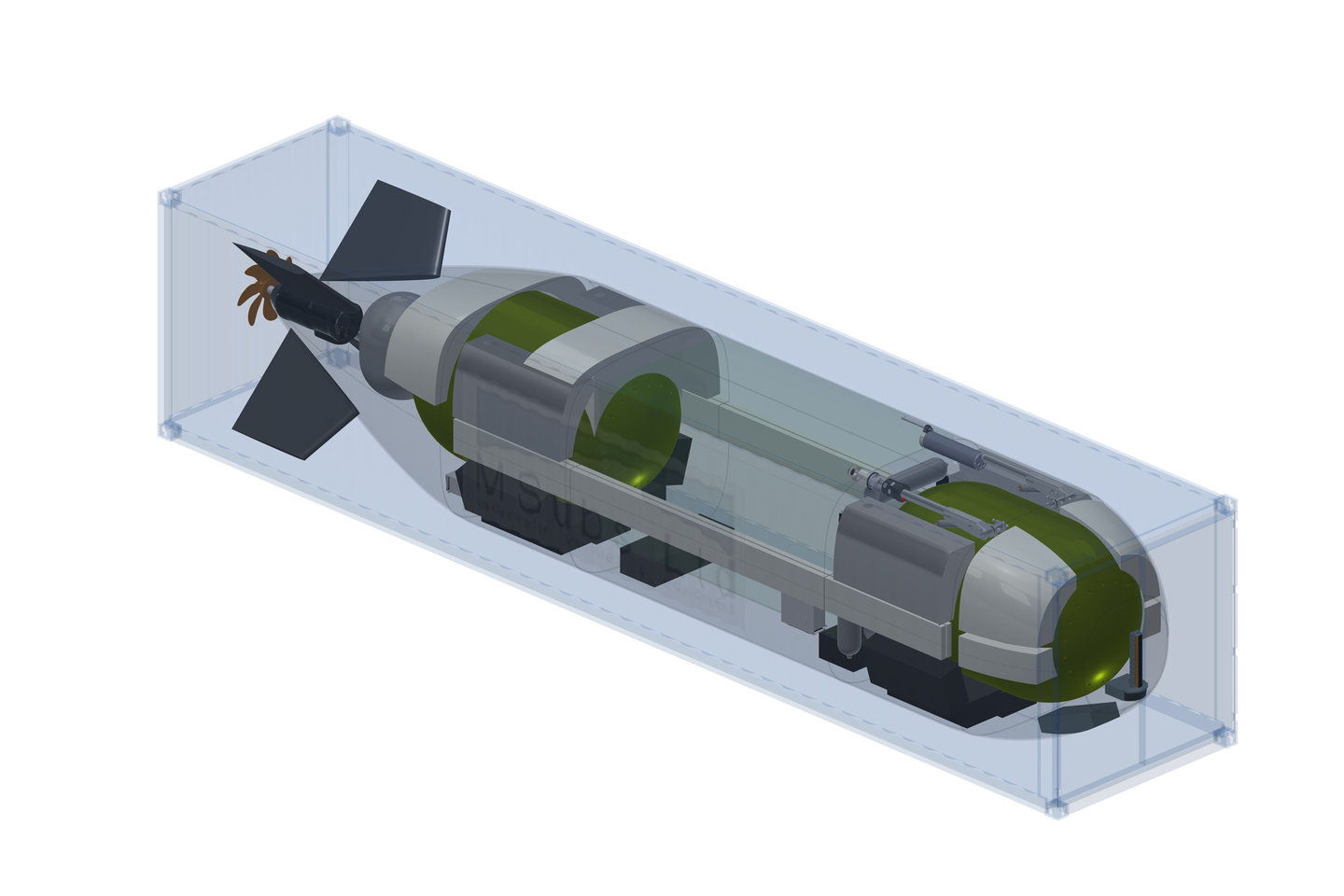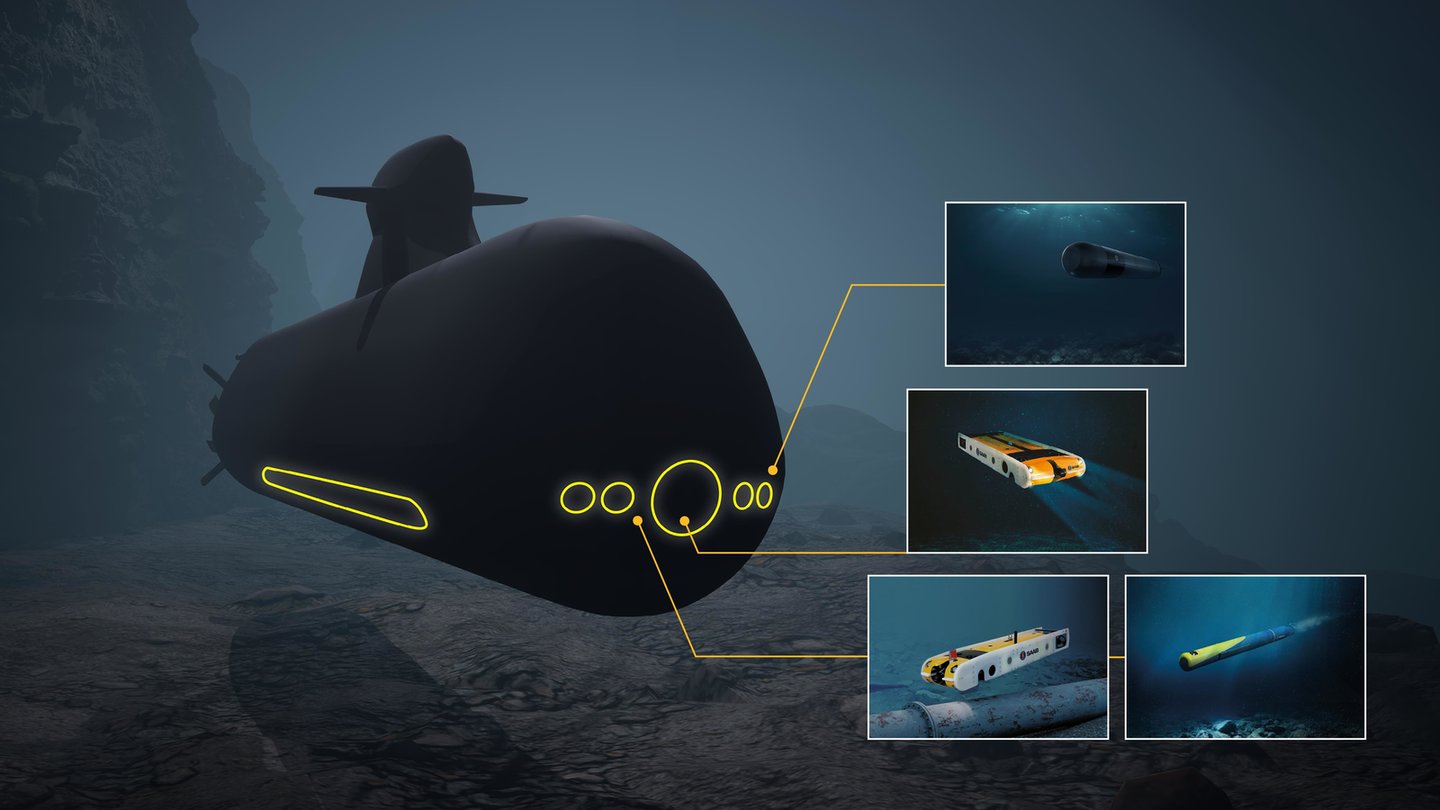| Seabed warfare is a ‘real and present threat’
海底战争是“真实存在的威胁” Date:2023-05-20 Source:Global Defence Technology By:Andrew Salerno-Garthw Viewed: |
Seabed warfare has moved on from hydrography and mine clearance as the sea floor infrastructure has exploded in scale. Andrew Salerno-Garthwaite reports.
随着海底基础设施的大规模爆炸,海底战争已经从水文测量和扫雷转移到海底。安德鲁·萨莱诺-加斯韦特报道。
Seabed warfare truly began in the 1960s with operations such as the United States Navy's Operation Ivy Bells, a cooperative effort by the US Navy, CIA, and NSA to wiretap Soviet undersea communication links during the Cold War.
海底战争真正开始于20世纪60年代,当时的行动包括美国海军的“常春藤之铃”行动,这是美国海军、中央情报局和美国国家安全局在冷战期间窃听苏联海底通信链路的合作行动。
Since then, the size of infrastructure networks on the seafloor and the dependence of civic society on these networks have exploded. Never-before-seen densities of pipelines, optical fibre, and power cables traverse the ocean, allowing data transfer in telecommunications and energy flows the distribution of gas, oil, and electricity.
从那时起,海底基础设施网络的规模和公民社会对这些网络的依赖性急剧增加。前所未有的管道、光纤和电力电缆密度穿越海洋,允许电信数据传输和能源流中的,即天然气、石油和电力的分配。
The security concerns are not in any sense theoretical. “There is a real and present threat out there today,” said Chris Lade, Saab sales manager and a former UK Royal Navy mine clearance diver, during a briefing on seabed operations at Euronaval conference Paris in October.
安全问题根本不是理论上的。萨博销售经理、前英国皇家海军扫雷潜水员克里斯·拉德在巴黎欧洲航空会议上表示:“今天存在着一个现实的威胁。”
The damage to the Nordstream pipelines at the end of September is widely publicised, but less well known is the loss of a major piece of the Norwegian sensor system in January, one of four seabed infrastructure loss occurrences this year alone.
9月底北溪管道的破坏得到了广泛宣传,但不太为人所知的是挪威传感器系统的损失,这是仅今年就发生的四次海底基础设施损失之一。
“[Seabed warfare] is extremely difficult to defend against and no country on earth is well-equipped or prepared to do the defending,” said H.I. Sutton, an independent naval researcher and author of ‘Covert Shores: The Story of Naval Special Forces Missions and Minisubs’, highlighting the contrast between defensive operations and expeditionary, offensive operations. “It can often be done in ways which are not attributable, which adds a hybrid warfare dimension,” continued Sutton, speaking of the threat from offensive operations.
独立海军研究员、《隐蔽海岸:海军特种部队任务和迷你潜艇的故事》一书的作者H.I.萨顿说“[海底战争]极难防御,地球上没有一个国家装备精良或准备好进行防御,”,他强调了防御行动与远征进攻行动之间的对比。萨顿在谈到进攻行动的威胁时继续说道:“这通常可以以不可归因的方式进行,这增加了混合战争的维度。”
Navies modernising for the challenge
海军现代化应对挑战
In February, the French Navy unveiled a new strategic seabed warfare doctrine, while in May, the UK Royal Navy met with private operators in the undersea, indicating that navies in the area are studying seabed warfare vulnerabilities. Due to the experience gained building the infrastructure developed by the oil and gas industry, it is thought that the commercial sector has primacy in ocean floor operations at depths beyond the continental shelf.
今年二月,法国海军公布了一项新的战略海底战原则,而今年5月,英国皇家海军会见了海底的私人运营商,这表明该地区的海军正在研究海底战的弱点。由于拥有建设石油和天然气工业发展的基础设施的经验,人们认为商业部门在大陆架以外深度的海底作业中具有主导地位。
“The civilian sector, such as offshore oil and gas, are often better equipped than navies,” continued Sutton, “but they tend not to be set up for covert action. In Russia the lines between civilian and navy are blurred, much more so than in [the] West.”
萨顿继续说道:“海上石油和天然气等民用部门的装备往往比海军更好,但它们往往不是为了秘密行动而设立的。在俄罗斯,民用和海军之间的界限很模糊,比西方更模糊。”
In November the UK Ministry of Defence (MoD) announced that it was prioritising the procurement of two Multi-Role Ocean Surveillance (MROS) ships. “The suspected sabotage of the Nord Stream pipelines in late September has brought these vulnerabilities in sharp focus,” said James Marques, associate aerospace, defence and security analyst at GlobalData, “prompting the MoD to speed up delivery of the MROS capability.”
十一月,英国国防部宣布将优先采购两艘多用途海洋监视舰。全球数据公司的航空航天、国防和安全分析助理詹姆斯·马克斯说:“九月底对北溪管道的破坏使这些漏洞引起了人们的关注,这促使国防部加快了MROS能力的交付。”
First announced in March 2021, the first ship is now scheduled to enter the fleet in January 2023.
第一艘船于2021年3月首次宣布,目前计划于2023年1月进入舰队。
The MROS ships will bring deep-diving operations back into the mission set of the Royal Navy’s Hydrographic squadron, building on the capabilities of its multiple surveillance ships. Its inclusion in the Royal Fleet Auxiliary is intended to advance British security by monitoring and protecting seabed communications cables and energy pipelines, and the ships are expected to carry Autonomous Underwater Vessels (AUV) for this purpose.
MROS舰艇将在其多艘监视舰的能力基础上,将深潜行动重新纳入皇家海军水文中队的任务范围。它被纳入皇家辅助舰队旨在通过监测和保护海底通信电缆和能源管道来促进英国的安全,预计这些船只将为此搭载自主水下航行器(AUV)。
The Royal Navy quickly followed this statement with another, announcing on 1 December that it had made an order for its first uncrewed submarine, Cetus. Built to covertly travel the oceans, the Cetus will monitor and listen for ships or submarines that may endanger the Fleet or vital pieces of infrastructure including deep-sea cables and pipelines.
英国皇家海军随后又发表了另一份声明,于12月1日宣布已经订购了第一艘无人潜艇“鲸鱼”号。“鲸鱼”号是为了秘密穿越海洋而建造的,它将监视和监听可能危及舰队的船只或潜艇,或包括深海电缆和管道在内的重要基础设施。
The vessel stands in contrast to the autonomous systems the Royal Navy has experimented with over the last decade in regard to its size. The latest addition will be “the length of a bus” at 12m, according to a Royal Navy press release. This is far larger than the small off-the-shelf AUVs currently in operation for mine hunting, but still able to fit inside a shipping container for transport anywhere in the world.
这艘船与英国皇家海军在过去十年中试验过的自主系统形成了鲜明对比。根据皇家海军的新闻稿,最新增加的将是12米的“巴士长度”。这比目前用于猎雷的现成小型无人潜航器(AUV)要大得多,但仍然可以装在集装箱内,在世界任何地方运输。
Without disclosing the full extent of its operational capabilities, the Royal Navy release stated that the “unarmed battery-powered craft will be able to dive deeper than any vessel in the current submarine fleet and cover up to 1,000 miles in a single mission”.
在没有披露其作战能力的情况下,皇家海军声明“非武装电池驱动的舰艇将能够比当前潜艇舰队中的任何船只潜水更深,在一次任务中覆盖1000英里”。
[Russia is] the most capable nation to conduct seabed operations today
[俄罗斯是]当今最有能力进行海底作业的国家
- Chris Lade, Saab
-克里斯·拉德,萨博
Russia is “the most capable nation to conduct seabed operations today,” according to Lade. He explained that Russia has a specific directorate for deep sea operations, known as GUGI, operating through the Russian Army and manned by Spetsnaz special forces.
拉德表示,俄罗斯是“当今最有能力进行海底作业的国家”。他解释说,俄罗斯有一个专门的深海作战局,称为GUGI,通过俄罗斯陆军运作,由斯佩茨纳兹特种部队负责。
The Russian fleet includes a variety of subsurface boats as well as highly capable oceanographic survey vessels. It has two mothership submarines, the largest based on an Oscar-class submarine, while the other is a derivative of earlier Delta-class submarines. These serve as the motherships for the Losharik minisub, Harpsichord AUV and Poseidon nuclear torpedo systems, providing a range of flexible applications and threats.
俄罗斯舰队包括各种水下船只以及能力强大的海洋调查船。它有两艘潜艇母船,其中最大的一艘是以奥斯卡级潜艇为基础的,而另一艘是早期德尔塔级潜艇的衍生物。这些潜艇是“洛沙里克”(Losharik )小型潜艇、“大键琴”(Harpsichord)AUV和“波塞冬”(Poseidon)核鱼雷系统的母船,提供了一系列灵活的应用和威胁。
“They do seabed operations, and that’s a range of things. They can lay sensors, they can interdict other people’s infrastructure, they can survey, they can do the whole gambit of what you might want to do on the seabed. So, there is a real and present threat out there today,” said Lade.
“他们进行海底作业,这是一系列的事情。他们可以铺设传感器,可以拦截他人的基础设施,他们可以进行调查,他们可以在海底做你可能想做的所有事情。所以,今天存在着真实而现实的威胁,”拉德说。
Defensive approaches for protecting seabed infrastructure
保护海底基础设施的防御方法
From discussions Saab has had with a range of different nations, there is initial capability to be able to act defensively. Lade speculates that one solution against threats to infrastructure can be sourced from the world of mine warfare. As a Royal Navy mine clearance diver, he was familiar with approaches to protecting convoys by following the route of passage and surveying the seabed, returning intermittently to resurvey and determine if any change had occurred.
从萨博与一系列不同国家的讨论来看,萨博最初有能力采取防御行动。拉德推测,对抗基础设施威胁的一种解决方案可以来自地雷战争的世界。作为一名皇家海军扫雷潜水员,他熟悉保护车队的方法,包括沿着通道和海底勘测,间歇性返回进行重新勘测,并确定是否发生了任何变化。
A derivative of this for protecting seabed infrastructure would be to survey, for example, an entire pipeline, with a mind to returning after a period of time to reassess and determine if any interdiction has occurred. This principle extends to setting up sensors along the pipeline as part of an alarm system, triggered when covert action is being taken.
例如,保护海底基础设施的一种衍生方法是调查整个管道,以便在一段时间后返回,重新评估并确定是否发生了任何拦截。这一原理延伸到在管道沿线设置传感器,作为警报系统的一部分,当遭遇隐秘行动时触发。
When addressing defensive and offensive operations, the ability to monitor cables is highly relevant. If a navy's operating platforms can dwell on the seabed, it is able to patrol the seabed as soon as it departs its home base - and in the case of AUVs or ROVs, this base would be a garage housed on the seabed.
在处理防御和进攻行动时,监视电缆的能力是非常重要的。如果海军的操作平台可以停留在海床上,那么它就可以在离开基地后立即在海床上巡逻——如果是AUV或ROV,这个基地将是一个位于海床上的车库。

// Cutaway of CETUS, the Royal Navy’s first autonomous submarine, described within a 40ft cargo container. Credit: UK MoD
//英国皇家海军第一艘自主潜艇CETUS的剖面图,描述在一个40英尺的集装箱内。来源:英国国防部
Such a garage has restrictions. The first is that with time, biological and underwater growth will accumulate on the garage and will need to be removed. This will depend on its location and the region of the ocean it is in, but generally the Remote Operated Vehicle (ROV) or AUV will have a six-month-periods dwelling in its garage at depth, and for the same reason the AUV or ROV may have to return.
这样的车库是有限制的。首先,随着时间的推移,生物和水下生长物将在车库中积累,需要清除。这将取决于其位置和所处的海洋区域,但通常情况下,遥控潜水器(ROV)或AUV将在其深度车库中停留六个月,出于同样的原因,AUV或ROV可能必须返回。
Two further components are critical to vessels housed on the seabed, both stemming from the need for communications. Firstly, a method of communication is required to interact with the AUV or ROV in real time, or else to give it signals so that it may complete its mission autonomously. Secondly a communications connection is necessary to download the data that the vessel has acquired. Where it can connect to an existing communication network, these problems can be overcome in a straightforward manner, and this is often the case with defence activity.
另外两个组成部分对停泊在海床上的船只至关重要,这两个部分都源于通信的需要。首先,需要一种通信方法来与AUV或ROV实时交互,或者给它信号,使它可以自主完成任务。其次,通信连接对于下载船只已经获取的数据是必要的。在可以连接到现有通信网络的地方,这些问题可以以简单的方式解决,国防活动通常就是这样。
However, when operating in an offensive position in a location where it could not connect to shore-power communications, it becomes necessary to employ a communications buoy to send its acquired data back to headquarters.
然而,当在无法连接到岸电通信地点并处于进攻位置时,有必要使用通信浮标将其获取的数据发送回总部。
Challenges from the seabed environment
海底环境带来的挑战
In the strategic paper produced by the French Navy in February of this year, and in conversations Saab reports having had with the UK Royal Navy and the Royal Australian Navy, the expressed depth of attainment desired is to operate at 6000m below sea level. With few exceptions, current commercial systems predominantly operate to 3000m. This environment offers some distinctive challenges for the AUV and ROV systems that are principally employed for this work.
在法国海军今年2月发表的战略文件中,以及萨博报告与英国皇家海军和澳大利亚皇家海军的对话中,明确表示希望在海平面以下6000米处作战。除了少数例外,目前的商业系统主要运行到3000米。这种环境给主要用于这项工作的AUV和ROV系统带来了一些独特的挑战。
During operations themselves, visibility and acoustics are environmental factors that navies have to concern themselves with when operating at the seabed level. Depth can diminishes both visibility and the use of acoustics, and additionally the salinity the water can have an effect on communications and the application sonar.
在作战过程中,能见度和声学是海军在海床作业时必须关注的环境因素。深度可以降低能见度和声学的使用,此外,水的盐度可以对通信和应用声纳产生影响。
The depth of operations also imposes limitations on design, partly from the increasing pressure as the vessels depends, but also because of the challenge of conveying power down to the level of operations. Syntactic foam is a component common to many ROVs at these depths. It is included to retain buoyancy and takes advantage of the non-compressible characteristic of the material.
操作的深度也对设计造成了限制,部分原因是容器取决于的承受压力不断增加,但也因为将功率输送到操作水平的挑战。复合泡沫塑料是这些深度的许多遥控潜水器常见的部件。它被包括在内以保持浮力并利用材料的不可压缩特性。

// Remote and autonomous undersea warfare capabilities are being integrated onto newly-developed crewed-platforms. Credit: Saab
//远程和自主的海底作战能力正在被整合到新开发的载人平台上。来源:萨博
However, the foam becomes heavier as the depth and pressure increase, demanding more from the system in terms of power to operate effectively, requiring a heavier system that demands more power in turn, in a vicious cycle. Compounding this, the power that an ROV draws on often comes from a tether to a surface vessel, presenting challenges to the descending ROV as the cable becomes more lossy with the greater length.
然而,随着深度和压力的增加,复合泡沫材料变得更重,对系统的功率要求更高才能有效运行,需要更重的系统,反过来又需要更多的功率,从而形成恶性循环。更为复杂的是,遥控潜水器所使用的动力通常来自水面船只的系绳,这给下潜的遥控潜水器带来了挑战,因为电缆的长度越长,损耗越大。
For tethered ROVs, complications can also arrive via the conditions being experienced by the surface vessel. Weather is an often under-appreciated factor in considering seabed warfare, but poor conditions above the surface can potentially prevent the surface vessel from operating systems below the water. Similarly, the current of the water can seriously impact the capability for activity at depth, in the use of both AUV and ROVs, with or without a tether. “The maximum current the diver can be effective is probably half a knot,” said Lade.
对于系留式遥控潜水器,复杂情况也可能通过水面舰艇所经历的条件而出现。在考虑海底战争时,天气是一个经常被低估的因素,但水面以上的恶劣条件可能会阻止水面舰艇在水下操作系统。同样,在使用AUV和ROV的情况下,无论是否使用系绳,水流都会严重影响深度活动的能力。拉德说:“潜水员可以有效活动的最大水流可能是半节流速。”
上一篇:STRATCOM Says China Has More ICBM Launchers Than The United States – We Have Questions 下一篇:Uncrewed innovation in the Asia-Pacific
| The Booker dilemma: inside US Army transformation
“布克”困境:美国陆军转型内幕 |
| The decision to cancel the M10 Booker light tank is at the core of a reordering of US Army planning.... [2025-07-16] |
| Focus: A fragile balance in Asia, China has become leading military power in the
焦点:亚洲平衡脆弱,中国已成为该地区的主要军事力量 |
| However, China's rapid military growth in this area is tipping the balance in favor of regional power. ... [2024-08-27] |
| Small drones will soon lose combat advantage, French Army chief says
法国陆军总司令表示,小型无人机将很快失去战斗优势 |
| By Rudy Ruitenberg Thursday, Jun 20, 2024 作者:鲁迪瑞滕伯格 2024年6月20日星期四 French Army Chief of Staff Gen. Pierre Schill inspecting a Rapid Eagle anti-drone system at the Eurosatory defense show in Paris on June 19, 202... [2024-08-18] |
| What’s next for Ukraine’s incursion into Russia?
乌克兰入侵俄罗斯的下一步是什么? |
| Ukraine’s forces have surprised us all with its recent incursion into Russia’s Kursk Oblast since the operation to turn the tide of the war,... [2024-08-17] |
